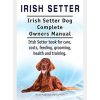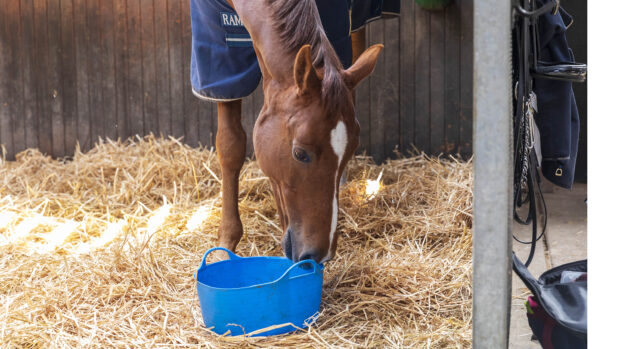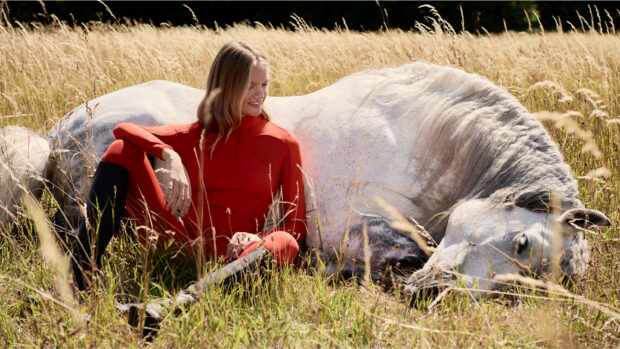The Irish Setter is known for its luxuriant silky red coat and is often referred to as the red setter. This differentiates it from the Irish Red and White Setter, which is a separate breed, though a close cousin. Originally both were considered Irish Setters, as the solid red coat grew increasingly popular, a distinct breed club was established. The Irish Setter tends to be racier and longer-legged than its red and white cousin, though both have the innate knack of freezing like a statue on point. Irish Setters are graceful, sinewy dogs; born to hunt, laden with stamina and a desire to work.
Like the English Setter, Irish Setters make wonderful family dogs, being typically sweet-tempered and providing plenty of entertainment and fun. They will play fetch all day long with the kids, run for hours alongside the bike or dad training for a marathon, and are loveable pets who are eager to please. Their stunning looks, sporty physique and impressive turn of foot give them huge appeal in the home, the field and the show ring.

Irish Setter breed: fact file
Kennel Club breed group: gundog
Size: large
Daily exercise: more than two hours a day.
Coat: medium, shedding.
Colours: red – in reality this is a rich mahogany or chestnut colour. Eyes are dark hazel to dark brown.
Lifespan: more than 10 years.
Bark: not usually excessive, but a loud bark when they do!
History: a working gundog that developed, as its name suggests, in Ireland. Setters were originally used, before the advent of guns, to locate game. They were known for their technique of crouching low, as if frozen to the spot (setting) to indicate where the deer or hare was located. Hunters could then close in to catch the game in nets.
The setter’s early bloodlines are likely to have included an assortment of gundogs. Originally Irish Setters were considered the same breed as the Irish Red and White Setter, but their breeding lines were refined to produce this all-red dog, which has become increasingly popular, as distinct from the patchy red and white version. It was recognised as a separate breed by the UK Kennel Club in 1914, although the breed standard was established in Dublin back in 1885. The Irish Red and White Setter, meanwhile, is now one of Britain’s endangered dog breeds.
Distinctive features: its red silky coat and racy, refined yet substantial build. The overall impression is balance, athleticism and elegance.
Temperament: extremely affectionate. Described by the UK Kennel Club as having a “rollicking personality”, they are known as clowns of the gundog world.
Things to consider: those luscious locks need a fair amount of attention and will benefit from a variety of grooming brushes to keep them tangle-free.
As well as plenty of exercise – as setters like to be kept busy – he may enjoy a puzzle game or chew toy to keep him entertained in the meantime, as they can resort to destructive behaviour or digging if left to their own devices for too long.
And although they are elegant and well-proportioned, the Irish Setter is tall and will appreciate a large dog bed to accommodate his long limbs.
Training: bred to be a working dog, Irish Setters are bright and enjoy working. They require a decent amount of exercise, due to their hunting roots, and patient, consistent discipline in training. Well-trained setters excel at sports such as hunting, agility, obedience and flyball.

Irish Setter Complete Owner’s Manual
Learn about this beautiful, graceful breed and find out whether or not the intelligent, social and gentle Irish Setter is the right dog for you.
You may also enjoy reading…

All about the English Setter

All about the Weimaraner

Double the fun: how to run with your dog

Wise words: the best dog training books for different scenarios

Simply delicious: the best natural dog treats

Chews well: the best safe dog toys for aggressive chewers

Subscribe to Horse & Hound magazine today – and enjoy unlimited website access all year round
Horse & Hound magazine, out every Thursday, is packed with all the latest news and reports, as well as interviews, specials, nostalgia, vet and training advice. Find how you can enjoy the magazine delivered to your door every week, plus options to upgrade your subscription to access our online service that brings you breaking news and reports as well as other benefits.




